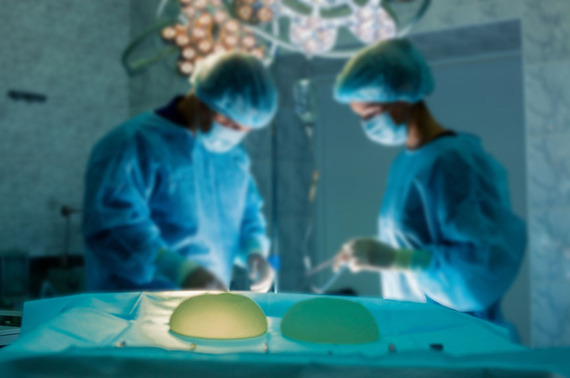At a recent luncheon with a fellow breast cancer survivor, my friend shared that her sister was in the process of making a determination about her breast reconstruction after mastectomy and asked me what I knew about the various procedures. For both of us, we were given only one option because that was either all that was available or because it was the only one that was approved by our insurance companies. So we decided that we needed to do some research in order to learn more.
I knew a woman who had the "tram flap" procedure but in researching that procedure, I also came across a new choice that is the "diep flap" so I needed to find out what the difference was between these two procedures. But, it didn't take me long to figure out that I was in way over my head on this one when I started to encounter acronyms like TRAM, free TRAM, MS-TRAM, DIEP, SIEA, GAP, PAP, TUG and LD. And while I now have a basic understanding of the two, I needed to do further research and found a link to a source that would provide "education and resources to empower women and men with information to make an informed decision about options for breast reconstruction after a mastectomy".
Of course, there is also the other option that I was given which is tissue expansion that involves expansion of the breast skin and muscle with a temporary expander. A few months later, the expander is removed and you receive either micro vascular flap reconstruction, or the insertion of a breast implant. But, even with this option, there are so many factors that need consideration both before and after this surgery as well.
Your reconstruction options may be limited more by the plastic surgeon with whom you are teamed than the procedures available. Therefore, patients should do their own research and gather as much information as possible, in particular with regard to the procedure that the person would personally prefer. Armed with this info, a consultation should be scheduled with your plastic surgeon to determine if your choice is a viable option in your particular situation and if not, why not. If you are satisfied with the outcome of this determination, you are ready to proceed but if not, you should seek a second opinion so that you can move forward with confidence with this next step.
No patient should be prohibited from or made to feel guilty about having reconstruction surgery after mastectomy, if that is her choice. A patient has just had one or two amputations and has made a decision to undergo a procedure to become as whole as possible again. And most importantly, progress has been made with regard to most insurance companies and most State laws providing for coverage of reconstructive surgeries. But, should you find that such is not the case for you or someone you know, you can search for organizations that offer financial aid for this assistance if you qualify.
A patient's choice for reconstruction may be as much of a psychological choice as it is a physical one. After breast cancer treatment, most patients seek to return to "normal" as much as possible. For most, it is difficult to look in the mirror and see a daily reminder of what has been lost to cancer. Not only is there a visual reminder at that point but it is extremely difficult to find clothing that fits in order to feel like you are making a decent appearance. And perhaps even more difficult is how one perceives herself with regard to being attractive to a partner.
After all that a patient has already endured in cancer treatments, it is most important to know that no patient elects to go through more surgery, pain, side effects, etc. that are associated with reconstruction unless it is absolutely necessary to them on some level. Therefore, as with every other step that a patient takes on the breast cancer treatment journey, she should receive just as much support with this treatment as with any other.
